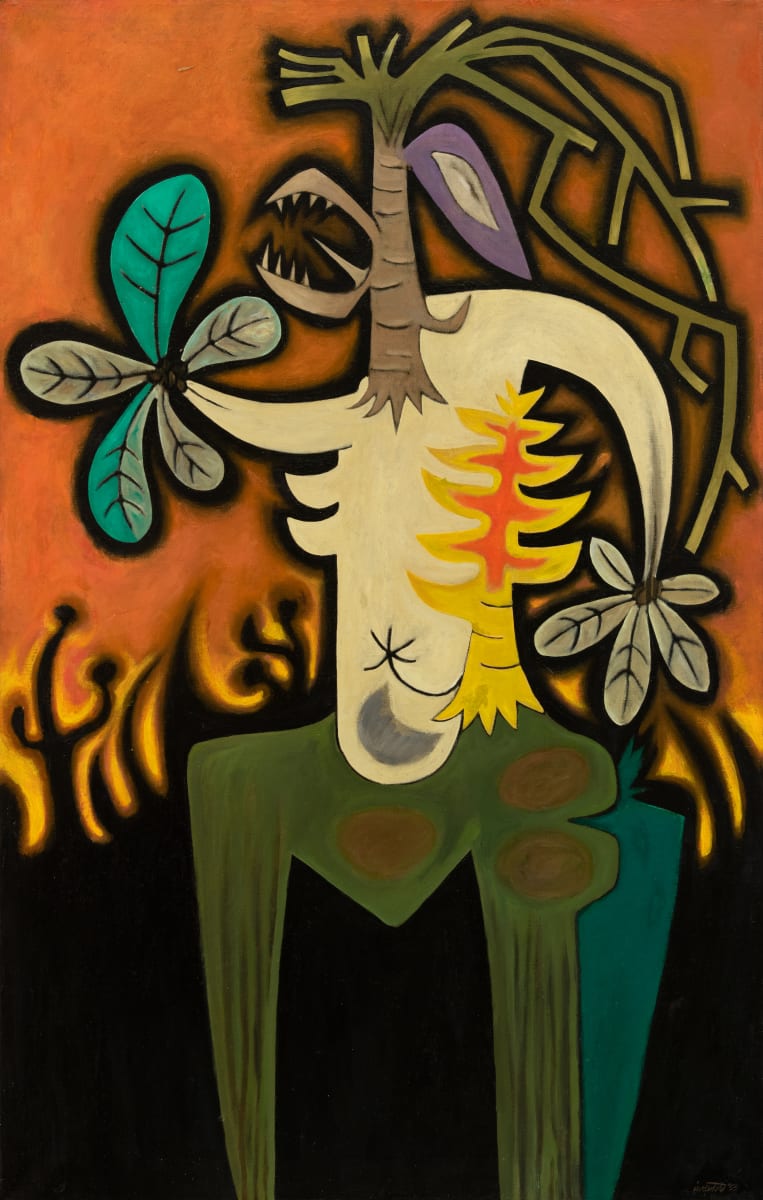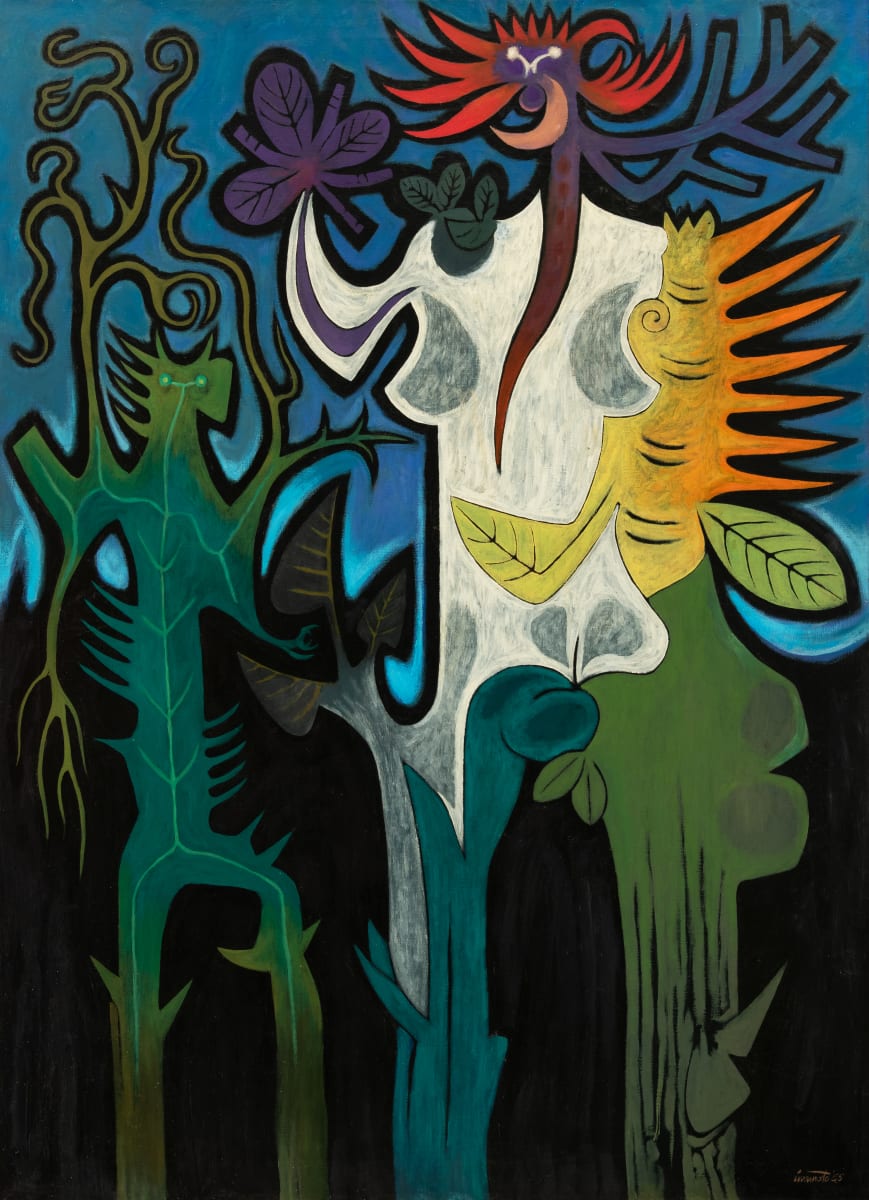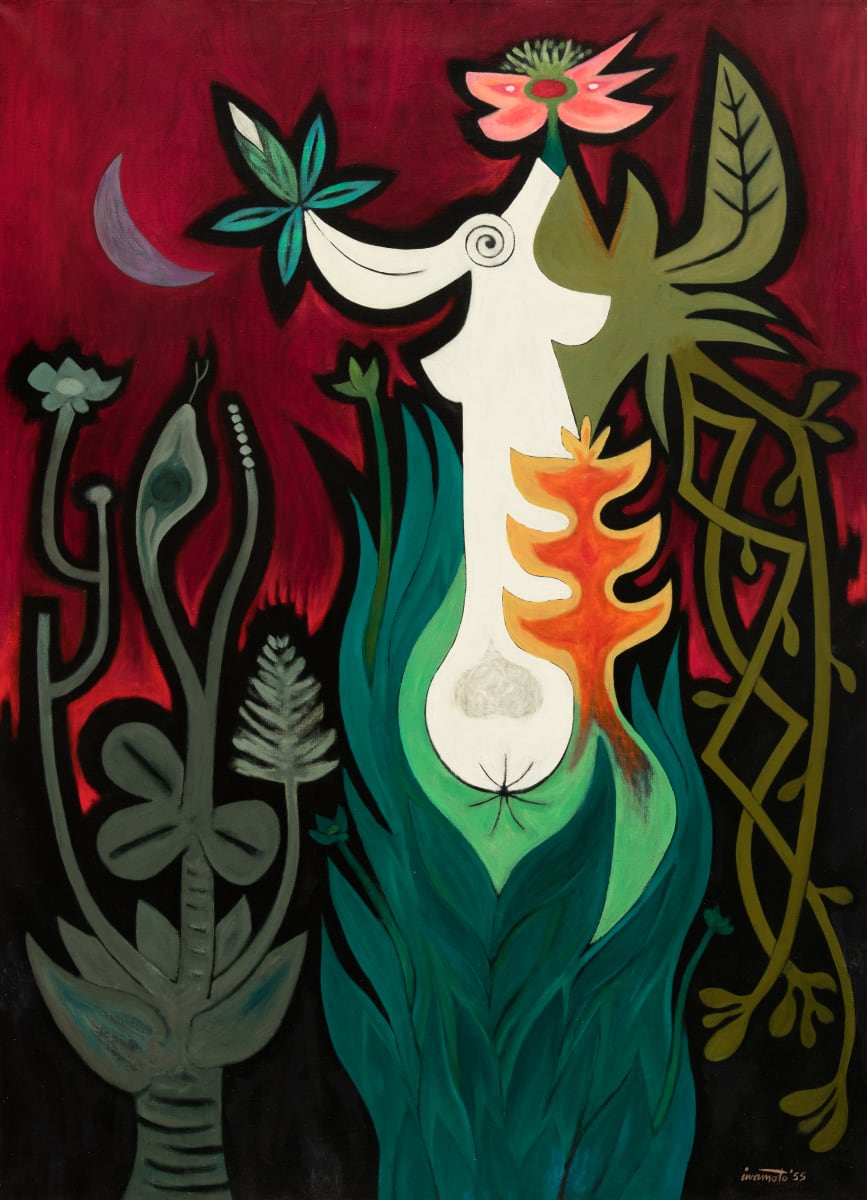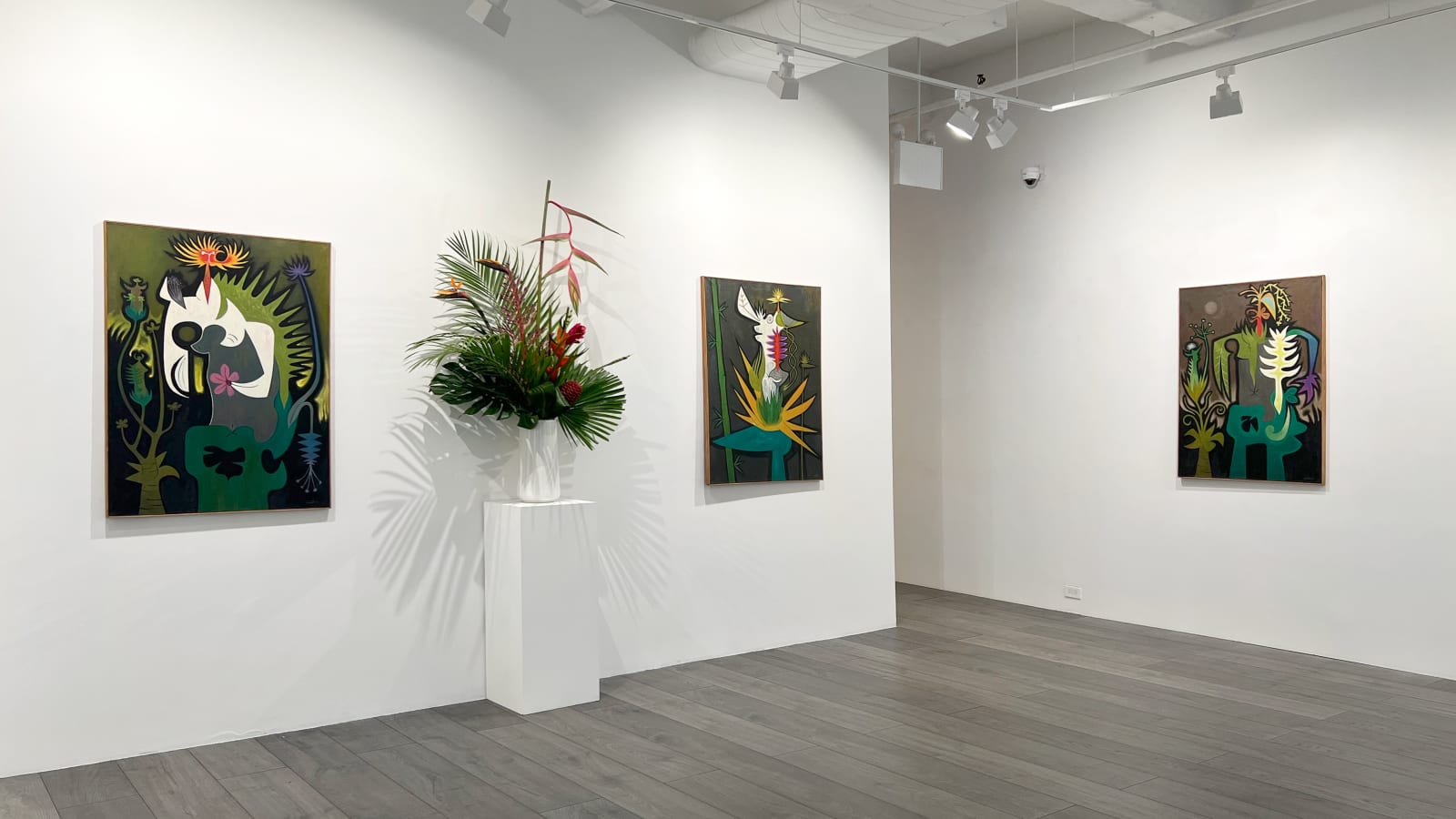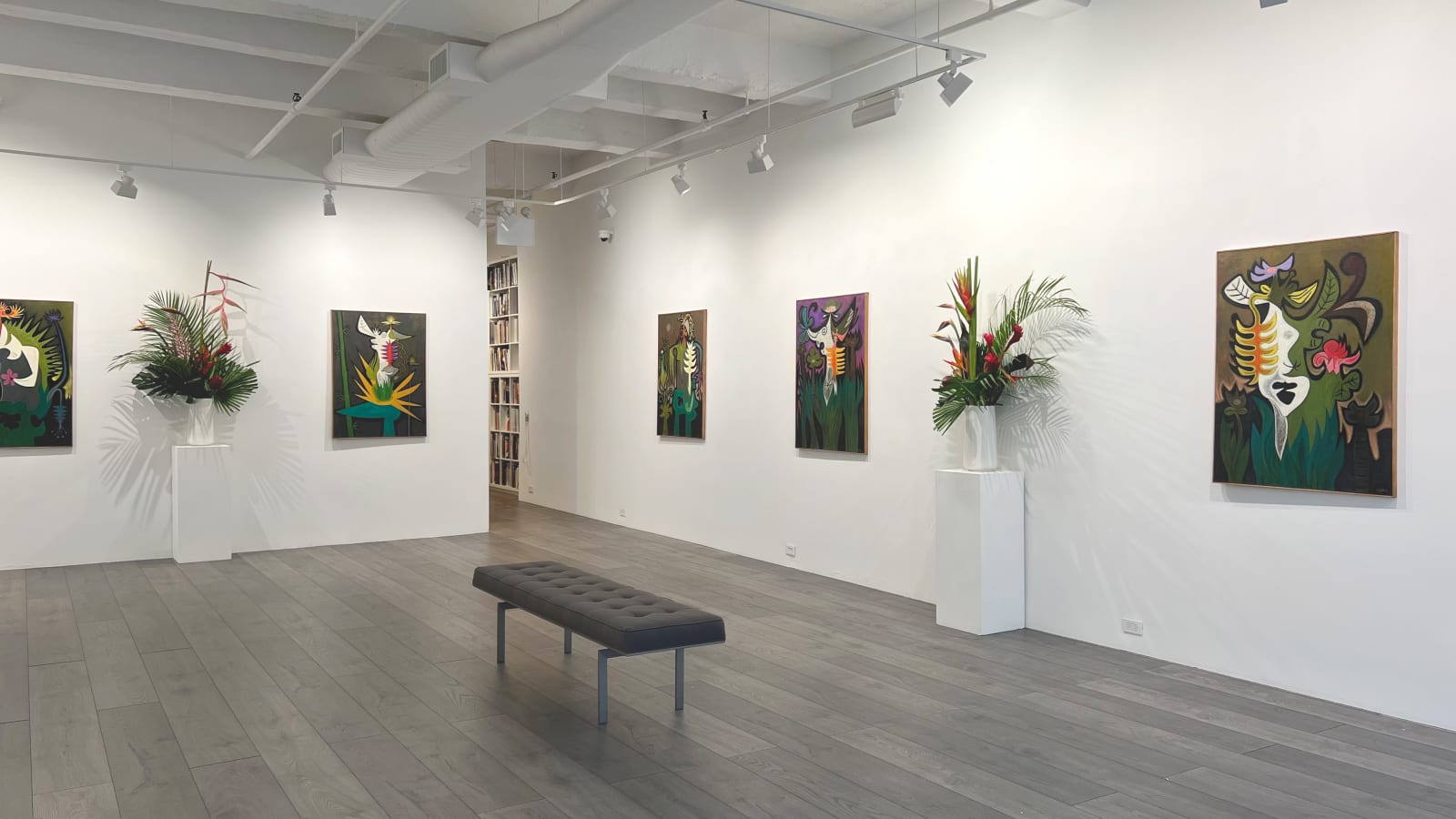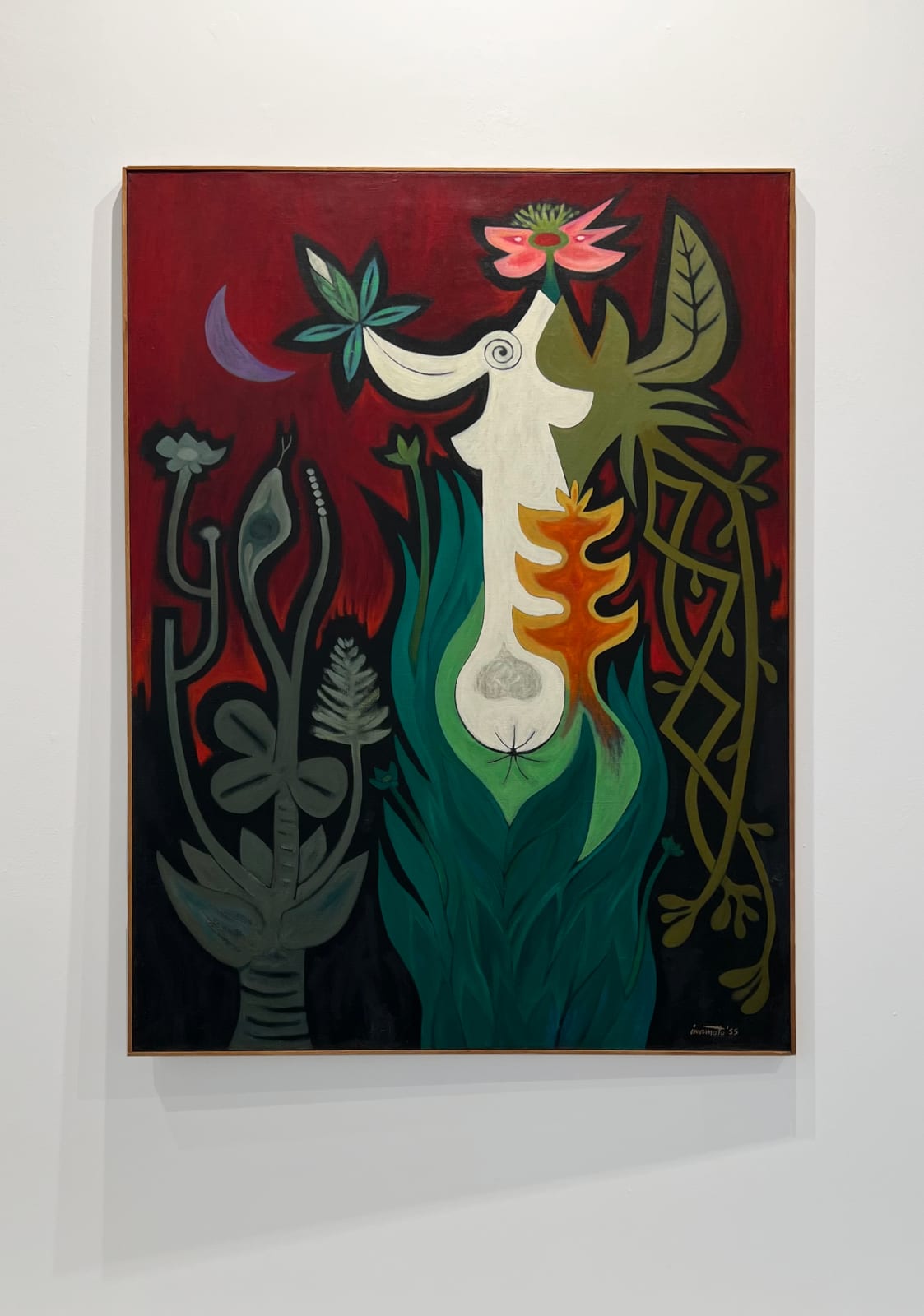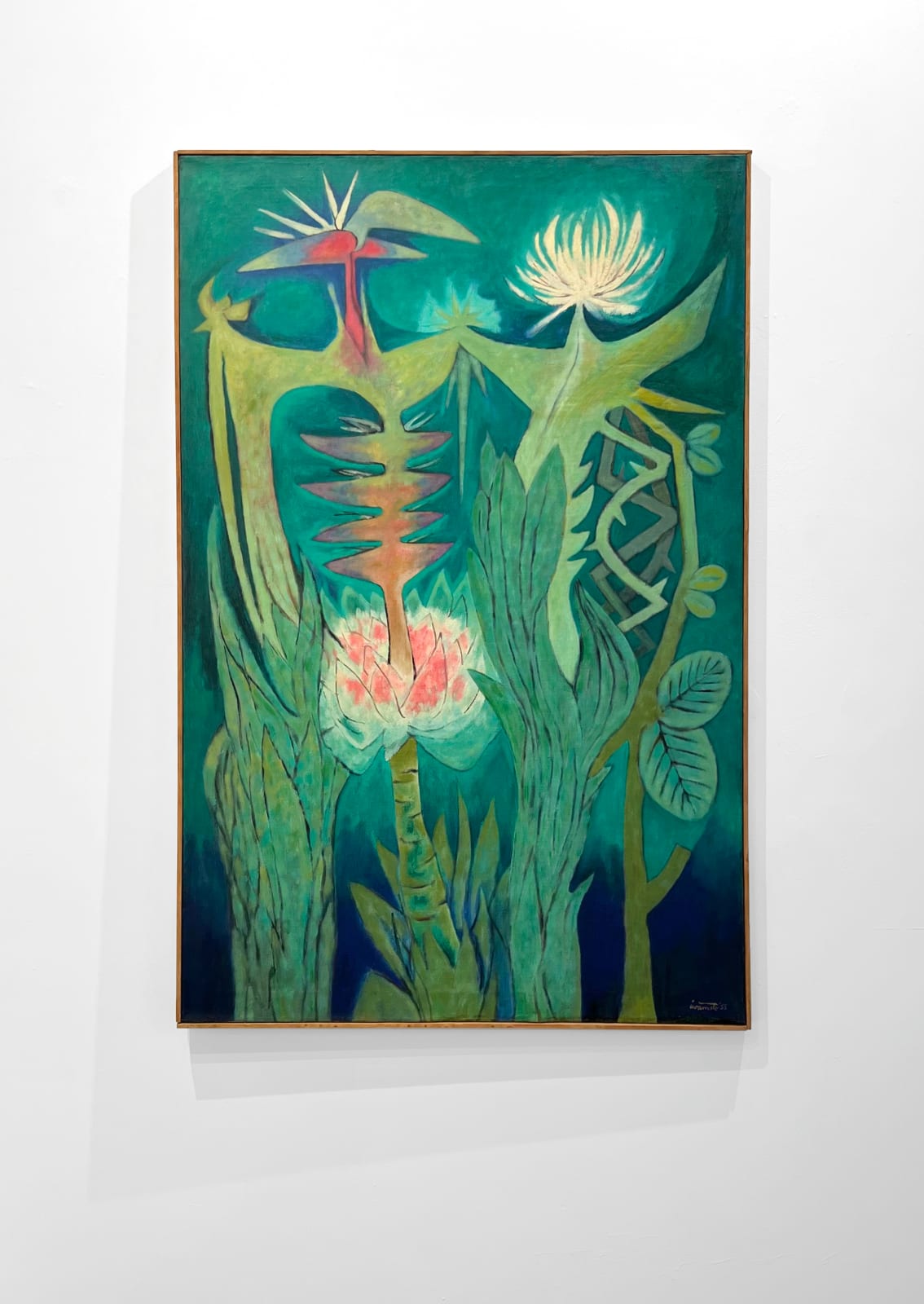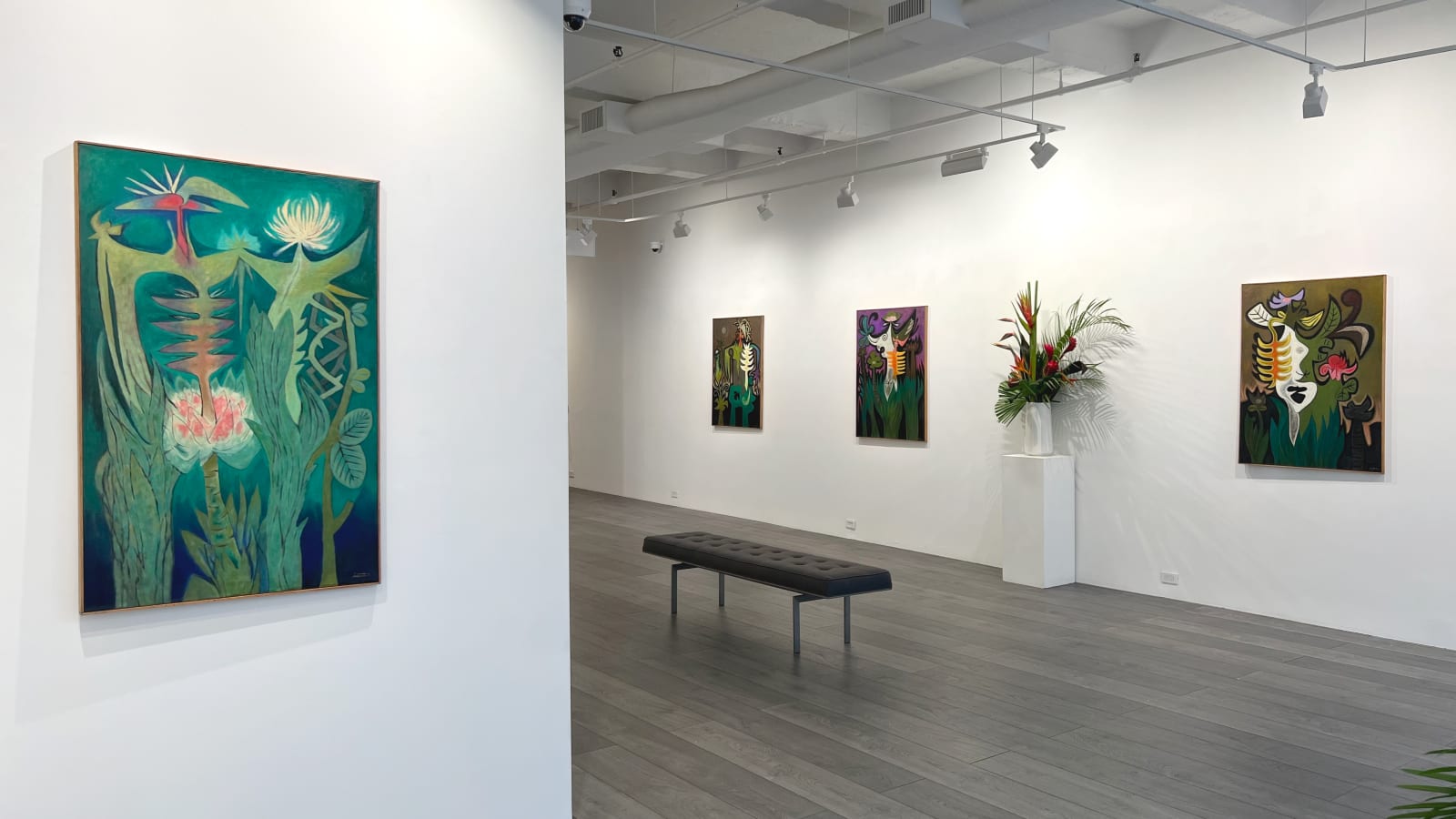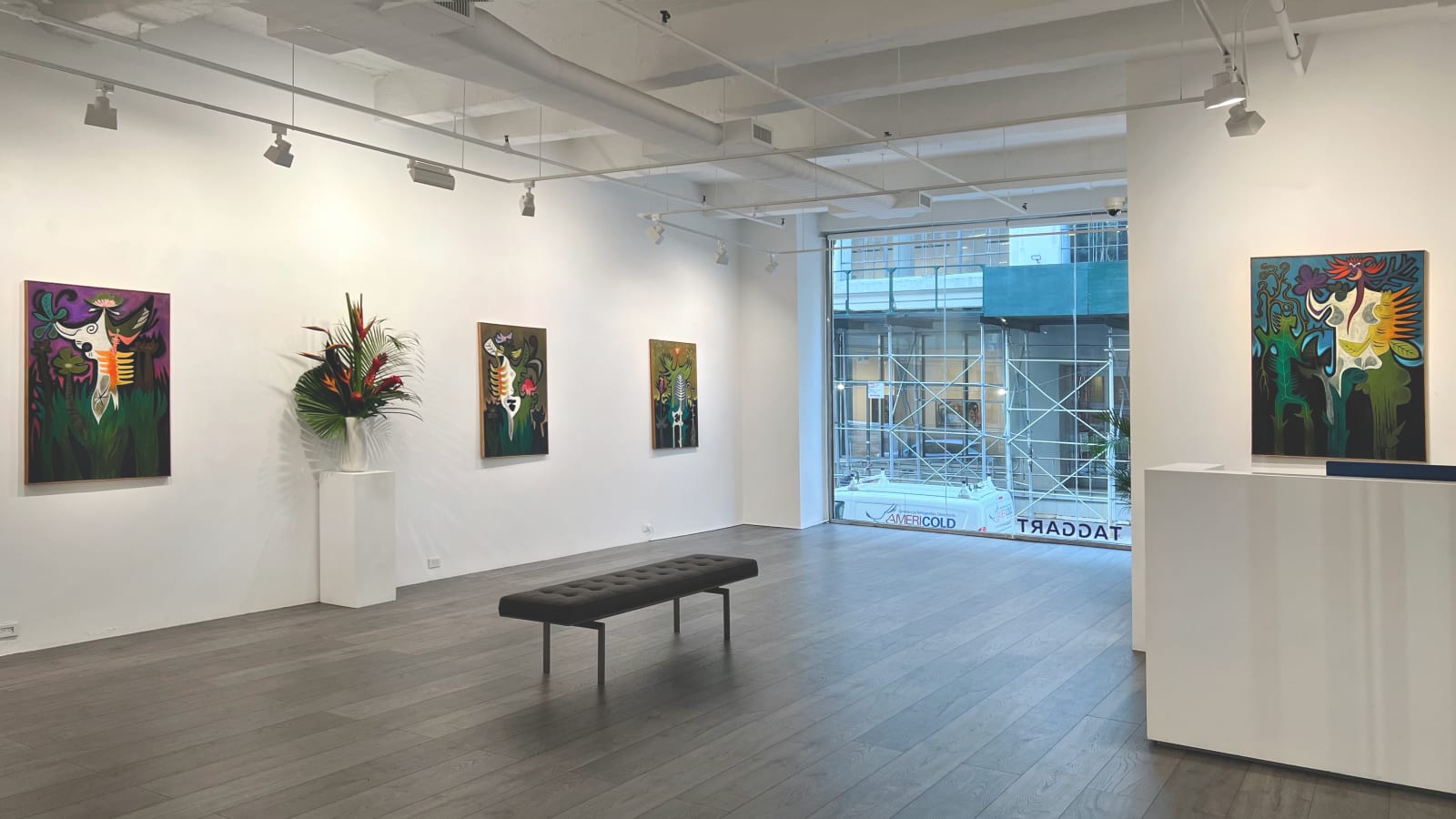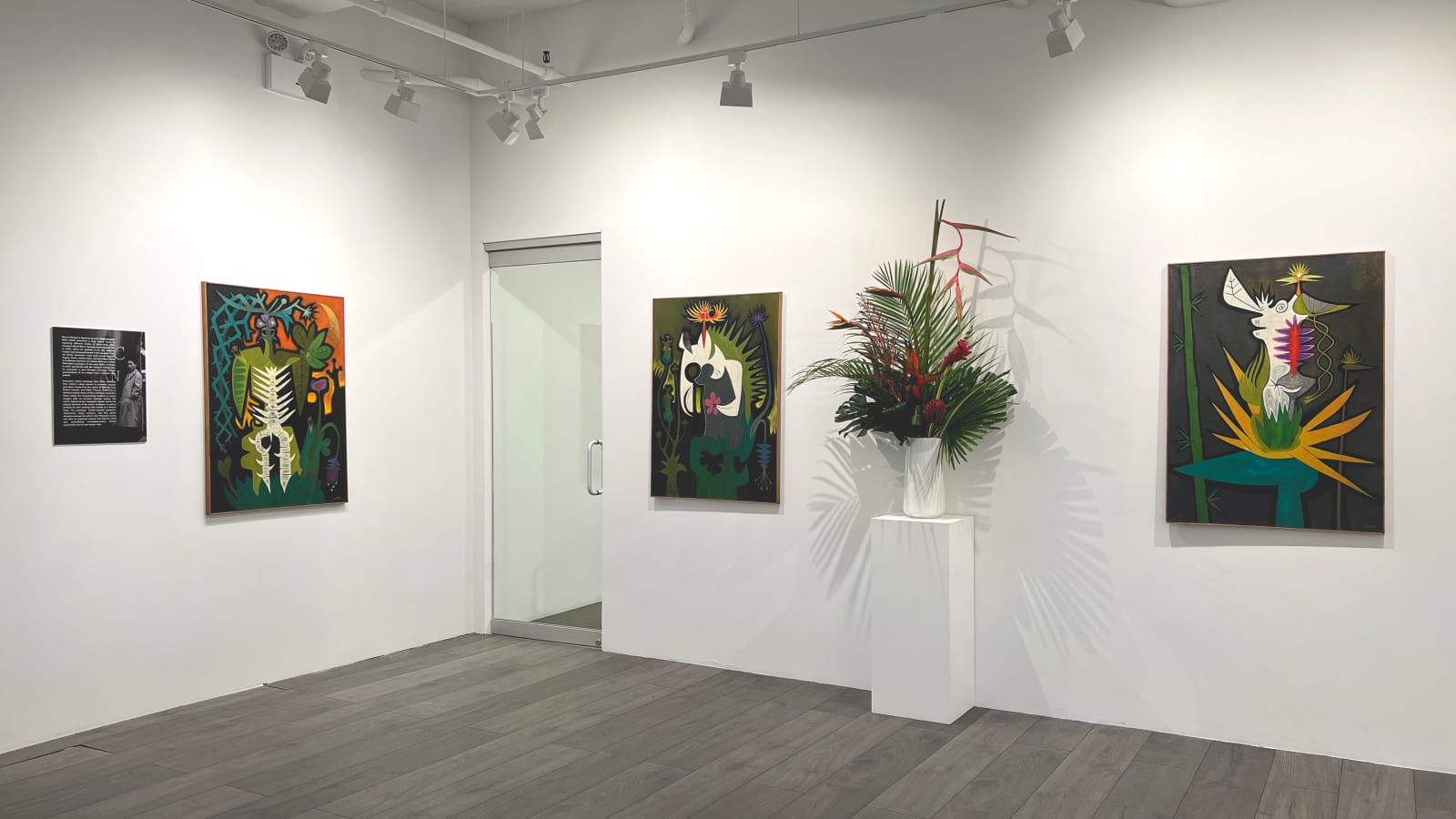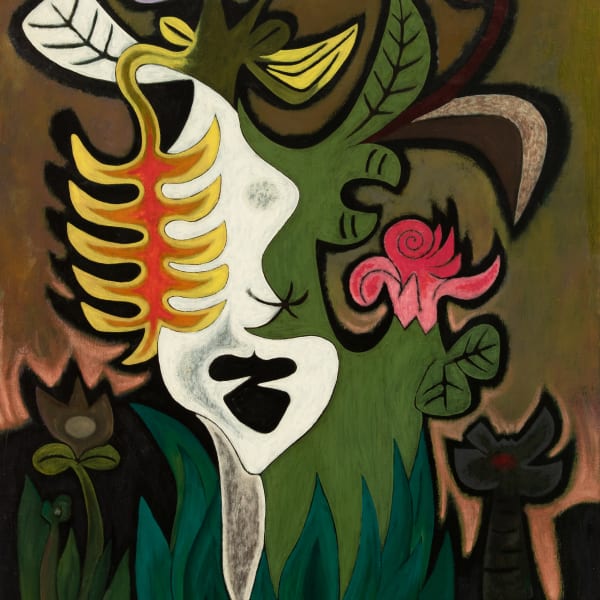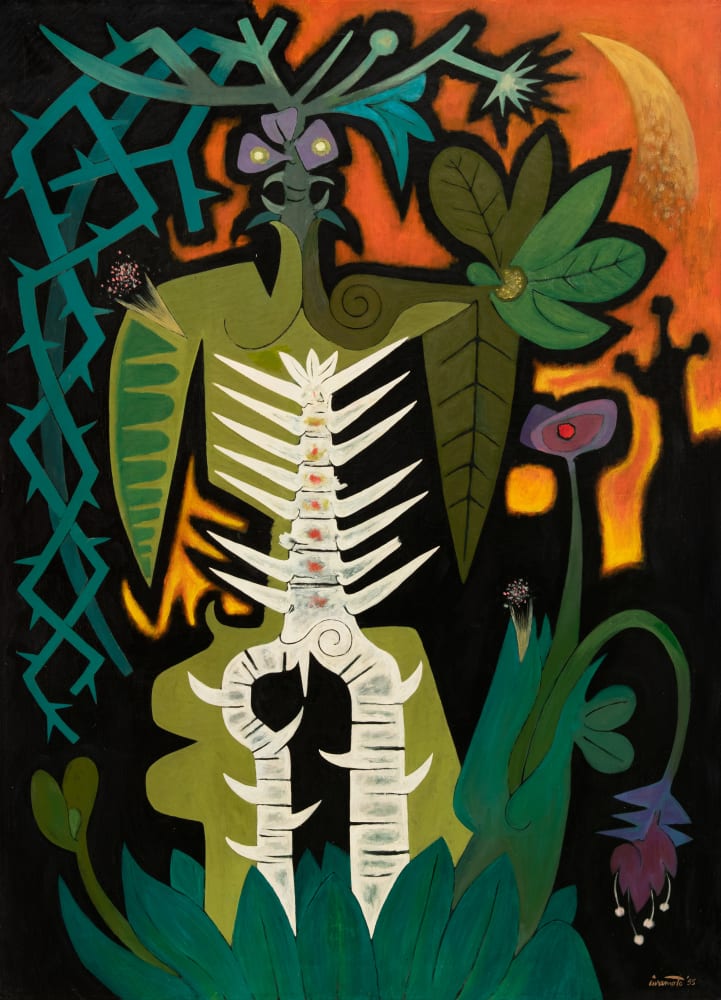
Iwamoto's 1955 paintings are populated by an invented taxonomy of kingdom hybrids
Hollis Taggart is pleased to announce the representation of the estate of Japanese-American artist Ralph Iwamoto, known mostly for his abstract and minimalist paintings. To celebrate the representation of the estate, the gallery will present a focused exhibition of paintings from the very beginning of Iwamoto’s career: 1955, when he first exhibited his work in New York City. These surrealist paintings explore the flora and fauna of his native Hawaii, as well as other organic forms, through a vibrant palette and techniques found in the art of Japan, the home country of both of Iwamoto’s parents. Wild Growth: Ralph Iwamoto, Surrealist Works from 1955 is the first in a series of exhibitions at Hollis Taggart that will explore various facets of the artist’s career. The exhibition will be on view from March 23 through April 15, 2023, with an opening reception on Thursday, March 23, from 5-8PM.
Hollis Taggart is pleased to announce the representation of the estate of Japanese-American artist Ralph Iwamoto, known mostly for his abstract and minimalist paintings. To celebrate the representation of the estate, the gallery will present a focused exhibition of paintings from the very beginning of Iwamoto’s career: 1955, when he first exhibited his work in New York City. These surrealist paintings explore the flora and fauna of his native Hawaii, as well as other organic forms, through a vibrant palette and techniques found in the art of Japan, the home country of both of Iwamoto’s parents. Wild Growth: Ralph Iwamoto, Surrealist Works from 1955 is the first in a series of exhibitions at Hollis Taggart that will explore various facets of the artist’s career. The exhibition will be on view from March 23 through April 15, 2023, with an opening reception on Thursday, March 23, from 5-8PM.
Ralph Iwamoto (1927-2013) was born in Honolulu, Hawaii to Japanese Buddhist parents. Iwamoto witnessed the bombing of Pearl Harbor as a teenager in 1941, and, like many others of his generation who grew up in Hawaii, served in the Second World War. In 1948, he moved to New York City, where he fully immersed himself in the art world, enrolling in the Arts Students League with the support of the G.I. Bill and eventually forming close relationships with artists who would go on the form the Minimalist movement, including Sol LeWitt, Robert Ryman, and Dan Flavin. Despite being exhibited in the Whitney in 1958 as well as in several other group shows at museums and galleries across the United States, Iwamoto’s career and work has not been studied or exhibited nearly as extensively as that of his peers.
“Since its founding, Hollis Taggart has been committed to advancing knowledge about under-recognized American artists and to working to restate their importance in the canon,” said Hollis Taggart. “We are thrilled that Ralph Iwamoto’s estate chose to work with us to promote scholarship about this multifaceted artist who was deeply embedded in the NYC arts scene but has been largely written out of narratives about it. We’re excited to begin the journey of reintroducing Iwamoto’s art to audiences through a focused look at one seminal year in his career: 1955.”
Though his Hawaiian-Japanese background remained very important to Iwamoto throughout his life, the experiences he had in New York City, as well as the community he formed here, were seminal to his development as an artist. Among other notable experiences, Iwamoto worked as a security guard at the Museum of Modern Art from 1957 to 1960. This job allowed him to spend significant time with the work of artists he deeply admired, including the surrealist imagery of Wifredo Lam, Rufino Tamayo, and Pablo Picasso. While Iwamoto worked at the MoMA following his creation of the paintings on view in Wild Growth, it is clear these artists influenced him throughout the 1950s. During this time, Iwamoto also worked at a store specializing in native Hawaiian goods and flowers called “Orchids of Hawaii.” This medley of experiences is clearly reflected in the surrealist forms of the flora and fauna found in his 1955 paintings, which are populated by “an invented taxonomy of kingdom hybrids,” as described by curator Jeffrey Wechsler in the catalogue essay.
While Wild Growth focuses on paintings from 1955, future exhibitions at Hollis Taggart will explore other important periods of Iwamoto’s career, including his experimentation with rigorous geometricism in the 1960s as well as his intense focus on the octagon in his minimalist compositions of the 1970s.
For more information about Wild Growth: Ralph Iwamoto, Surrealist Works from 1955, please contact us at info@hollistaggart.com or +1 212.628.4000.
For press inquiries, please contact Aga Sablinska at aga.sablinska@gmail.com or +1 862.216.6485.








